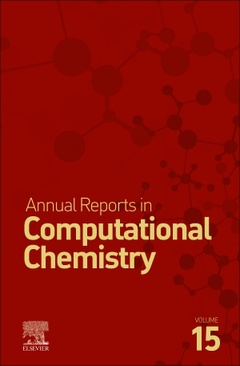Description
Annual Reports in Computational Chemistry
Coordinator: Dixon David A.
Language: English
Subjects for Annual Reports in Computational Chemistry:
348 p. · 15x22.8 cm · Hardback
Description
/li>Contents
/li>Biography
/li>Comment
/li>
Annual Reports in Computational Chemistry, Volume 15, provides timely and critical reviews of important topics in computational chemistry. Topics covered in this series include quantum chemistry, molecular mechanics, force fields, chemical education, and applications in academic and industrial settings. Focusing on the most recent literature and advances in the field, each article covers a specific topic of importance to computational chemists.
Contributions from: Roland Lindh Michelle Coote Shenggang Li Mingyang Chen Ryan C. Fortenberry Thomas Daniel Crawford So Hirata
- Includes timely discussions on quantum chemistry and molecular mechanics
- Covers force fields, chemical education, and more
- Presents the latest in chemical education and applications in both academic and industrial settings




